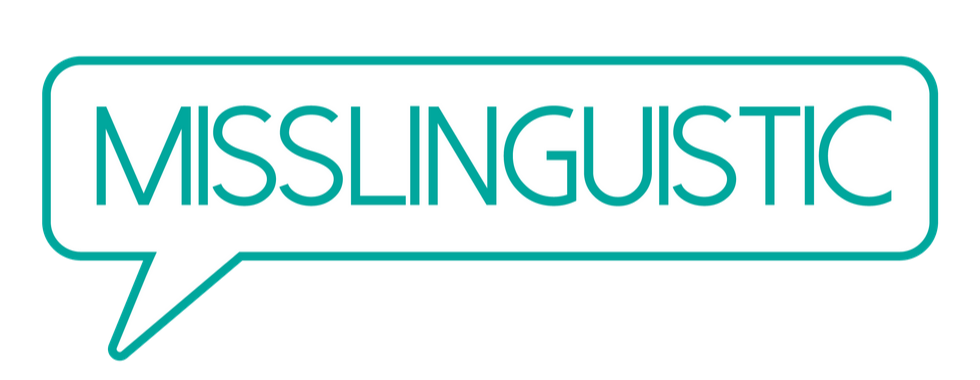Ready to learn, once and for all, how to pronounce the names of the Indian languages we hear so much about?
After all, 7 of the top 20 most spoken languages in the world are Indian languages (Hindi, Bengali, Urdu, Marathi, Telugu, Tamil, and Punjabi).
A full 6% of the world's languages are from India.
So if you work in the language services industry like I do (or do business with India) you probably need to talk about these languages pretty frequently.
But the moment you mispronounce “Marathi” you....reveal your level of India expertise, for better or for worse. So let’s see if we can do anything about that!
One reason Indian language names are so fraught with peril for English speakers is that they mostly have not been transformed for our benefit, as have many other languages.
For example, Vietnamese is pronounced "tiếng Việt" in their own language. Hungarian is pronounced "magyar"! But we English speakers are not expected to know that--we just call these languages "Vietnamese" and "Hungarian". In these and many other cases, English speakers have assigned their own, more pronounceable words for the world's languages, and they stuck.
That was not the case for most Indian languages!
Will You Be Able to Pronounce The Indian Language Names Correctly If You Don't Speak Any Indian Languages?
Yes (almost!) and I'll show you how.
My linguistic consulting firm (Meridian Linguistics) is sometimes asked to provide pronunciation help to English speakers. For example, sometimes an English speaker needs to know how to approximate a foreign word in a language that he or she doesn't speak.
For example, the names of foreign leaders.
An English speaker might not be able to pronounce "Angela Merkel" in perfect German (that "r" might be beyond saving). But to be more accurate to how the current German leader pronounces her name, it is best to at least pronounce the "g" as a hard "g" (unlike the common pronunciation of "Angela" in English. That hard "g" already exists in English, so it is easy enough for English speakers to say. And it goes a long way towards sounding like you know what (or who!) you are talking about!
My company helps find the closest accurate pronunciation that an English speaker can approximate, in order to help you sound informed and aware.
So let’s manage our expectations. If you are an English speaker, you won’t be able to master the pronunciation of any of these languages anytime soon. Don’t get me started on the nuances of the Tamil voice-onset timing, or breathy voiced fricatives in Hindi!
But let’s at least make sure we don’t embarrass ourselves!
Below you’ll find recordings (prepared by one of my favorite resources, Forvo.com, as well as Wikipedia). I've also included IPA transliteration, and my best English approximation for those of you who don’t read IPA.
Have a listen as you go along!
And if you’re having fun, why not try to learn a little more of an Indian language? My favorite way to get a taste of a new language is to book a lesson on italki, or Innovative (they have Hindi and Urdu courses!)
Let’s dive in! Here are the top-10 most spoken languages in India (other than English) and how to pronounce their names.
Hindi
You probably hear this one pretty often, and it is one of the easiest for English speakers to approximate. If you pronounce it as “hihn-dee”, then you are close enough for now. We won’t get into that beautiful “breathy voiced ɦ sound here.
Bengali
(/bɛŋˈɡɔːli/) Here is the one exception to the rule: Bengali is the English name for the language that calls itself “Bangla” ([ˈbaŋla]) Good to know, right? Bengali and Bangla are the same language.
Bengali is pronounced as you might guess: ben-ga-lee
And Bangla is pronounced: bang-la (not ban-guh-la)
Unfortunately we don’t have Forvo links for this one, but you can check out the Wikipedia page.
Marathi
/məˈrɑːti/ Don’t worry too much about the r sound, unless you’re already comfortable with the single Spanish “flapped” r as in “para” (not the rolled r as in “perro”). Here, you’ll want to focus on the last syllable, which is pronounced closer to the English “tee” than “thee””.
Pronunciation: mah-rah-tee
Telugu
The trick here is to try to keep the stress almost equal on each syllable, with maybe a little more stress on the last syllable, if anything.
Pronunciation: teh-loo-goo
Tamil
(/ˈtæmɪl/ For extra credit, try not to blow out as much air as usual when you pronounce the “t” sound. But even if you can’t master that, you’ll do fine to pronounce it as below:
Pronunciation: tah-muhl, with the accent on the first syllable.
Just don’t pronounce it “tah-MEEL”.
Gujarati
[ɡudʒəˈɾɑːtiː] Put the accent on the penultimate syllable.
Pronunciation: goo-jah-rah-tee
Urdu
For best results, make sure to use the oo sound and not the uh sound. If you can flap your r like in Spanish (again, not the rolled r) then even better!
Pronunciation: oor-doo
Pronunciation:
Kannada
Try to make all three syllables equally stressed.
Pronunciation: kuh-nuh-duh
Odia (formerly known as Oriya)
It will make a big difference here if you can master the “d” sound, which should sound like the English d in “sadder” or the “t” in “meter”.
Pronunciation: oh-di-yah
Malayalam
One of the more beautiful names (in my opinion!)
Pronunciation: muh-lay-yuh-luhm
After you’ve practiced these a few times, you’re ready to let them roll off your tongue with ease! Now…will you be learning any Indian languages? Let me know in the comments!




